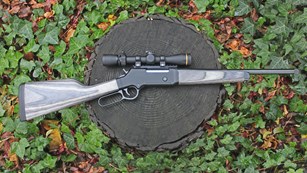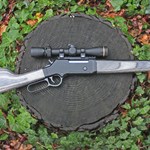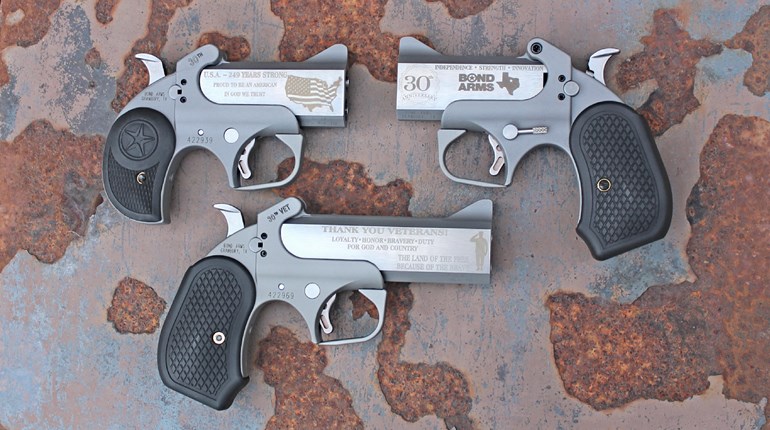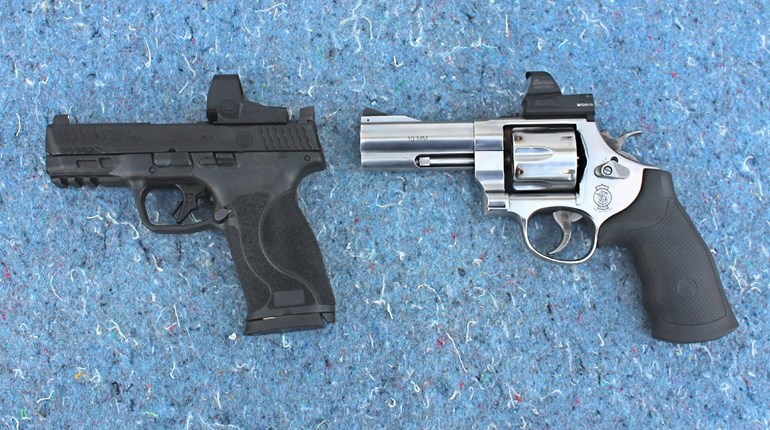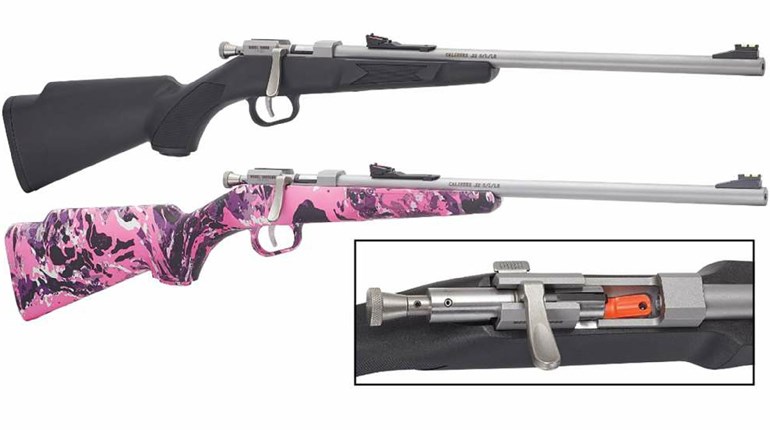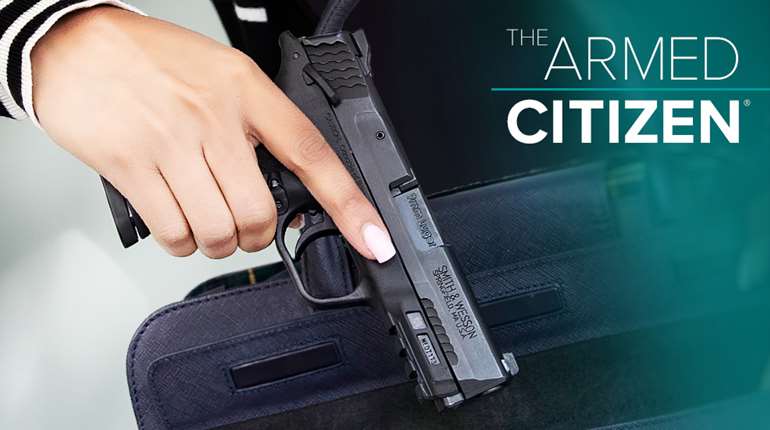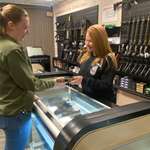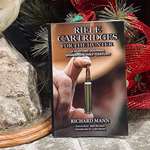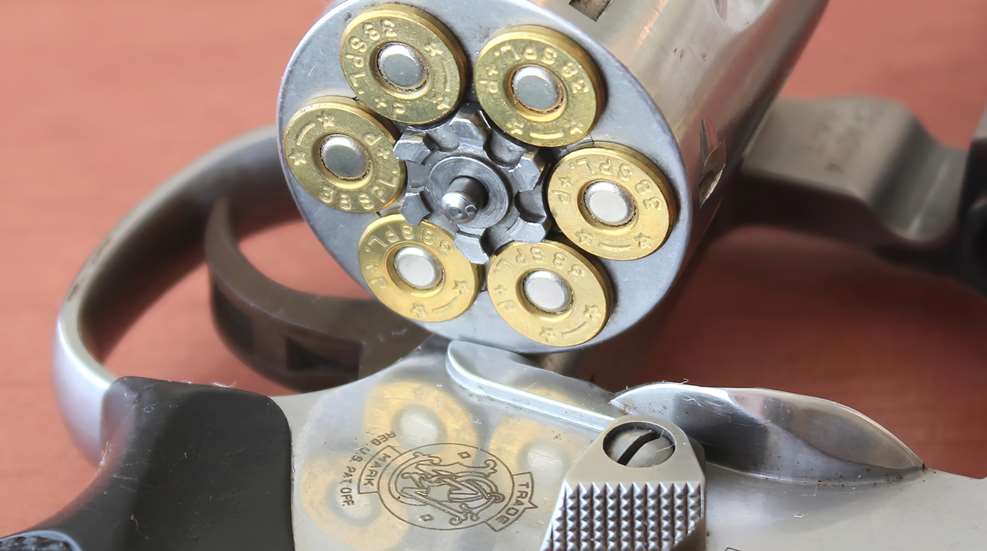
For some shooting sports enthusiasts, their first experiences with double-action revolvers are less than positive. This is usually the case when the gun they're handed is either too small or too big for a beginner. Small center-fire revolvers with short 2" barrels and compact grips are popular for concealed carry. But a snub-nose can be a real bear to manage if you haven't used them before. Made with lightweight frames, snub-nose revolvers can have heavy triggers and produce snappy levels of felt recoil. Although they can be manageable with practice, small revolvers are not models to be shot for enjoyment at the range. Some folks try these first, then swear off revolvers forever. 
At the other end of the revolver spectrum are the massive hunting models chambered in big-bore cartridges for hunting bears, boars and elk. Youtube is littered with videos of unsuspecting souls pulling the triggers of these 6-shot recoil generators without knowing what to expect. Their experience is uncomfortable, if not downright painful. Once again, they kick revolvers to the curb and never consider them again.
However, there is a much more comfortable middle ground that doesn’t get much coverage in shooting media these days. A Goldilocks revolver that’s not too big, not too small, but a just right option for several applications. It used to be that mid-size, double-action revolvers chambered in .38 Spl. were the firearm of choice for law enforcement officers and a preferred option for home defenders. Among the most popular were the Smith & Wesson Model 10, a blued steel 6-shot with fixed sights, and the Model 64, which is the same gun but made out of stainless steel.

By the late 1980s, police forces began switching out their wheelguns for 9 mm semi-automatic pistols. But these high-quality .38s didn’t just disappear. Instead, they went into long term storage. From time to time, groups of these guns are sold off by police departments to retailers for resale to the public at discount prices.
Recently, I was visiting the AIM Surplus website and found listings for law enforcement retired Smith & Wesson Model 64 revolvers with rubber grips selling for $399.95, which is about half the price of a brand new one. It’s a softer shooting model which is affordably priced for beginners who would like to give revolvers a try. It’s also an ideal option for comfortable range practice, casual plinking and home defense. A gun like this is also a good starting point for folks who want to learn more about how to save money by purchasing used firearms instead of more costly factory fresh models. With this in mind, I ordered one of these Model 64 revolvers to put through its paces to see how it would perform.

Purchasing used firearms sight unseen can be a tricky business if you’re not careful. Make sure you are purchasing the gun from a reputable dealer with a clearly defined return policy. Generally speaking, law enforcement trade-ins tend to be a better investment that used guns with an unknown ownership history. LE guns tend to be durable, reliable models purchased in new condition from reputable manufacturers. The officers who carry them are counting on these handguns to defend their lives and the lives of others. This means the guns will show signs of being carried around a good deal (scratches, holster rub) but they are rarely mistreated and tend to be shot infrequently. Even though the cosmetics of the gun are likely to be less than perfect, the barrel and action will still have plenty of working life left in them.
When ordering a used gun, be prepared to invest some additional cash and elbow grease when it arrives. The very first thing to do is to conduct a bench check of the gun. This means working all of the controls and operations with the gun completely unloaded. The goal is to verify that everything is working properly. If it's not working properly, or there's more wear and tear than expected, put the gun down and contact the dealer. Trying to repair the gun yourself may void the return policy.

Once the gun passes the bench checks, like the Model 64 did, go ahead and field strip it just as if you were going to clean it. Make sure to take the additional step of removing the grips. Grips usually don't need be removed for routine cleaning but you would be surprised at how much gunk and junk can collect under there. There's also the possibility that a mechanical problem, or corrosion concealed under the grip, needs to be tended to. In this case, there were no mechanical issues or dirt under the Model 64's grip but a good deal of tar-like gun oil had built up from years of cleaning without the grip being removed.
If all of the parts look ship shape, go ahead and give that gun a bath! My rule of thumb is that all guns I’m handling for the first time are presumed to be dirty and un-lubricated until I clean and lubricate them myself. In this case, the Uncle Mike's rubber grip needed to be cleaned as well as the steel components. There were a couple of small spots of surface rust that came off with a bit of polishing. After it was scrubbed, oiled and fully reassembled, the Model 64 proved to be in very good condition for a used gun. The stainless steel exterior exhibited only minor surface wear. The cylinder spun freely when open and all of the controls were clean and tight. The trigger pull had that signature Smith & Wesson smoothness, that these older models are known for, which got even better once the gun was clean.

The two components that often need to be replaced on a used handgun are the sights and the grip. In this case, the revolver has fixed sights that are milled into the frame and barrel, meaning they can’t be traded out. But I did apply some black enamel to the rear sight notch and bright orange enamel to the top edge of the front sight blade. This is an old school trick for crisping up the fixed sight picture, and it still works nicely. I was prepared to replace the grips, but as it turned out, the set this gun shipped with were still in great shape once they were de-greased.
This particular model does have the Smith & Wesson integral locking mechanism. A key port for the lock is located on the left side of the frame, just above the cylinder release. Using a specialized key, the action can be locked, preventing the revolver from firing. Because this is a used gun, a key is not provided. However, the keys can be purchased online from various dealers if you would like one.

Shooting a 4" barrel, all-stainless steel Model 64 with a full-size grip is much more manageable than a snub-nose revolver and it does not produce the intense recoil of the big-bore hunting guns. This revolver weighs in at 35.8-oz. unloaded and the 4” barrel gives it a nice balance. The double-action trigger is relatively heavy with an 11 lb. trigger pull, but it’s smooth and can be mastered with some practice. You also have the option of manually cocking the hammer for a single-action trigger pull of 3 lbs. 14 oz.

In regard to stopping power, the .38 Spl. has a proven track record of effectiveness from 4" barrel revolvers. This is a popular cartridge that tends to be readily available at local sporting goods stores with a variety of bullet weights and types to choose from. Overall, this Model 64 exhibited solid defensive accuracy during formal bench rested testing at 25 yards. Geco Super Matrix 100-gr. RHTA frangible solids, which is a practice grade load, tapped out a best group of 3.29" with an average of 3.54". The Double Tap Defense 110-gr. semi-jacketed hollow point load printed a best group of 3.17" with an average of 3.33". The best performer of the group was the Black Hills Ammunition 125-gr. +P jacketed hollow point with a best 5-shot group of 3.14" and a five group average of 3.28".

All too often when I hear folks comparing semi-automatic pistols and revolvers, they use the words “good” and “bad” in their descriptions. And if your first go-round with a revolver hurt your hands, then you may be ready to drop all wheelguns in the “bad” bucket and move on. However, I’m a firm believer that the Goldilocks factor of midsize .38 Specials, like the Model 64, can make them a just right option for several reasons. As I'm writing this, the demand for defensive firearms here in the United States is exceptionally high, especially for handguns, due to concerns driven by the Covid-19 pandemic and incidents of civil unrest. When new product supplies are running low, or money is tight, a high-quality used handgun can be a practical, budget-friendly alternative to a new gun purchase. Don't be too quick to dismiss a revolver as a primary or secondary defensive option for your home.
But remember, the surplus gun market has a high turnover rate. Good deals like this one are here today and gone tomorrow. So do your homework, keep an eye out and grab the good deals before they get away.

Specifications:
Distributor: AIM Surplus
Manufacturer: Smith & Wesson
Model: LE Surplus 64-7, K-Frame
Action: Double-Action Revolver
Caliber: .38 Special
Finish: Stainless Steel
Grips: Black Rubber
Sights: Fixed
Double-Action Trigger Pull: 11 lbs. (As Tested)
Single-Action Trigger Pull: 3 lbs. 14 oz. (As Tested)
Barrel Length: 4"
Overall Length: 9.25"
Height: 5.375"
Cylinder Width: 1.45"
Weight: 35.8-oz. Unloaded
Capacity: 6 Rounds
Twist: 1:16” RH
Rifle Grooves: 6
Accessories: None
Suggested Surplus Price: $399.95










